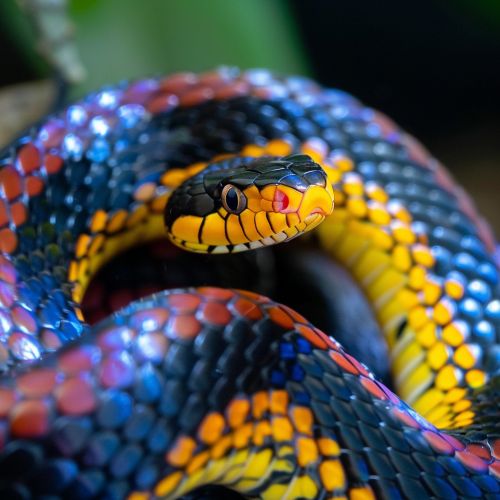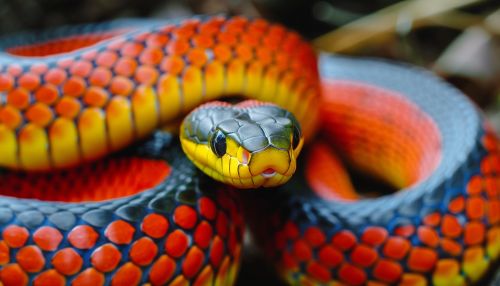Micrurus
Classification and Description
Micrurus is a genus of venomous snakes, commonly known as coral snakes, within the family Elapidae. The genus is composed of over 80 distinct species, all native to tropical and subtropical regions in the Americas.


.
Coral snakes are known for their vibrant color patterns, which typically consist of alternating bands of red, yellow, and black. These colors serve as a warning to potential predators of the snake's venomous nature. The species within the Micrurus genus are relatively small, with most species measuring between 60 and 80 centimeters in length.
Anatomy and Physiology
The anatomy of Micrurus snakes is characterized by a slender body, a short, blunt head that is not distinct from the neck, and a short tail. The eyes are relatively small with round pupils. The body scales are smooth and glossy, arranged in 15 or 17 rows at midbody.
The venom of Micrurus snakes is potent and primarily neurotoxic, affecting the nervous system and causing paralysis. The venom composition varies among species and is composed of a complex mixture of proteins and peptides.
Behavior and Ecology
Coral snakes are primarily terrestrial, although some species are known to climb trees and swim. They are secretive and elusive, spending most of their time hidden under leaf litter or in burrows. They are generally most active at dawn and dusk (crepuscular), although some species are nocturnal.
Coral snakes are carnivorous, feeding primarily on small vertebrates such as lizards, frogs, and other snakes. Some species also consume invertebrates like insects and spiders. Prey is typically swallowed whole, and the venom is used for prey immobilization.
Reproduction
Coral snakes are oviparous, meaning they lay eggs. The breeding season varies among species and geographical regions, but typically occurs in the spring or early summer. Females lay a clutch of 2 to 12 eggs, which are usually deposited in a hidden location such as a burrow or under leaf litter. The eggs incubate for approximately two to three months before hatching.
Conservation Status
The conservation status of Micrurus species varies widely. Some species are common and not considered threatened, while others are rare and classified as endangered by the International Union for Conservation of Nature (IUCN). Threats to coral snakes include habitat loss due to deforestation and human encroachment, as well as collection for the pet trade.
Human Interaction
Due to their venomous nature, coral snakes pose a potential threat to humans. However, bites are relatively rare due to the snake's secretive behavior and the fact that they generally only bite in self-defense. When bites do occur, they can be serious and require immediate medical attention.
